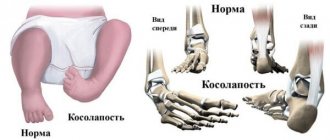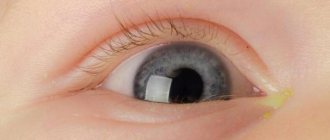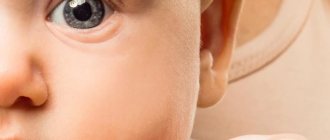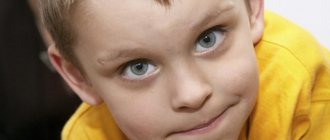What does it look like in a child?
Eye rolling, in most cases, occurs in infants when falling asleep. This looks like the iris disappearing under the upper eyelid, leaving only the white sclera visible. The eyes are half-closed at this time, but the pupil is not visible, only a white stripe.
Experienced mothers understand that when the pupil begins to creep upward, the child is ready to fall asleep and begins to doze. Although it often looks like the baby is grimacing and smiling. Sometimes the eyelids remain slightly closed during sleep, leaving only the whites visible. Some parents get scared and think that the baby is ill, as it looks like rolling his eyes when he loses consciousness.
For newborns, such eye movements are within normal limits.
Reasons for rolling eyes
I think you already know that after the baby was born, some systems of his body have not yet fully formed. Their maturation occurs gradually, throughout the first year of life. Since this also applies to the organs responsible for vision, when crying or falling asleep, the pupils may move behind the upper eyelids.
Are you interested in details? I am sure that you want to know more about the reasons for this phenomenon, so I provide this list:
- not strengthened neural connection between the visual nuclei located in the brain and the optic nerve,
- oculomotor muscles or retina that have not completed their development,
- small eyeball.
Only by the second month of life do the infants begin to synchronize the movements of the eyeballs and improve focusing. You can clearly notice that a newborn baby rolls his eyes in the first month of the baby’s life, since the functionality of the visual organs develops gradually in the process of strengthening their connections with the brain. Due to the lack of control over the system of muscles of the organs of vision, the pupils can move freely vertically or diverge to the sides, as if involuntarily. Therefore, there is absolutely no point in talking about any deviations if this is observed when the baby wakes up or when he falls asleep.
During the borderline state between sleep and wakefulness, this is considered normal.
During sleep itself, it is even more impossible to control the muscles responsible for the movement of the eyeballs and eyelids. For this reason, sometimes it seems as if the baby is dozing with raised eyelids. Sometimes he rolls his eyes in his sleep if he is disturbed by extraneous sounds and the body adjusts to a state of awakening. Therefore, try to maintain silence while the baby is sleeping. If he is not disturbed, then after an involuntary lifting of his eyelids, he can quite safely fall asleep soundly.
Until what age is it normal to fall asleep?
Eye movements are carried out by a whole group of muscles, which, like all other muscles in the baby’s body, are in their rudimentary form at birth. The movements of the arms and legs are chaotic, and the newborn is not yet able to regulate them. The eyes are a paired organ; controlling their movement is even more complex. Therefore, in newborns, temporary strabismus is often noticeable, which gradually goes away with strengthening of the muscles.
When a baby falls asleep, he completely loses control over his fragile muscles. Up to 90% of babies under the age of one month roll their eyes. The nervous system gradually improves, muscles become stronger, the child begins to focus his gaze and follows objects.
Pediatricians believe that in infants the upward movement of the pupils when falling asleep during the first 2-3 months is within normal limits.
Help: it is important that the baby does not show signs of anxiety, gains weight, develops and eats well.
Causes in children over one year of age
If after one year the rolling continues, this is a cause for concern. It is necessary to undergo a medical examination in order to timely identify the disease that is causing the child to roll his eyes. First of all, you should pay attention to diseases of the ENT group and examine intracranial pressure.
| If this is not confirmed, epilepsy must be excluded. If the result is negative, only a nervous tic will remain. Accordingly, treatment will depend on the cause of the eye rolling. |
ENT diseases
These can be any diseases of this group. They are not directly related to ocular function. However, they are accompanied by pain, difficulty breathing, and general malaise.
As a result, the child begins to roll his eyes involuntarily. This is a reaction to unpleasant sensations. Therefore, it is necessary to treat ARVI.
Increased intracranial pressure
This is a dangerous condition that can lead to chronic vascular diseases and glaucoma. If eye rolling is not associated with fatigue or acute respiratory viral infection, you should definitely get an MRI to check intracranial pressure.
If this is confirmed, then the cause of eye rolling is high blood pressure. Accordingly, it is necessary to take medications to reduce it and undergo regular treatment in clinics.
Return to contents
Nervous tic
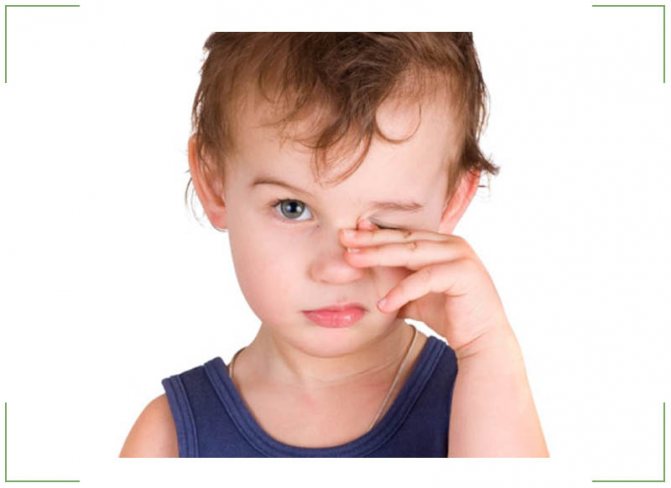
Its etiology is not fully understood. This is due to its psycho-emotional nature. After all, any strong experiences can lead to a tic. For example, about appearance, relationships with classmates, and so on. All reasons depend on the particular child’s perception of the world around him.
Therefore, there is no need to scold or control every eye movement. We will have to deal with the underlying causes of the condition and act on them. However, as a rule, the rolling goes away on its own. After all, in childhood it is difficult to concentrate on the same experience for a long time. Therefore, the tick goes away and the rolling stops.
Epilepsy
Rolling your eyes may indicate an epileptic seizure, which will soon occur. Epilepsy is a severe congenital disease.
It is associated with damage to the nervous system and manifests itself in periodic seizures. A person with this diagnosis must take strong medications throughout his life to increase the interval between seizures and reduce their intensity.
Epileptic seizure
It is a complex condition when a person cannot control himself. If there is epilepsy and the child begins to roll his eyes, this indicates an imminent seizure. Accordingly, you need to put the child on the bed and take measures to limit his movements. Because they are uncontrollable and he can cause serious injury to himself. Return to contents
In what cases should you consult a doctor?
Eye rolling at an early age is not an abnormal behavior, but if it does not stop after 2-3 months, it is time for parents to worry. Deviations in the state of health and alarming signs of illness can be judged by a number of symptoms and characteristics of the infant’s condition.
Sleep disturbances or frequent crying
A newborn can communicate all worries, pains and inconveniences only by screaming. Frequent crying, reaching the point of hysterics, when the baby twitches and cannot calm down for a long time, indicates serious problems. Another alarming sign is poor sleep, inability to relax or fall asleep soundly.
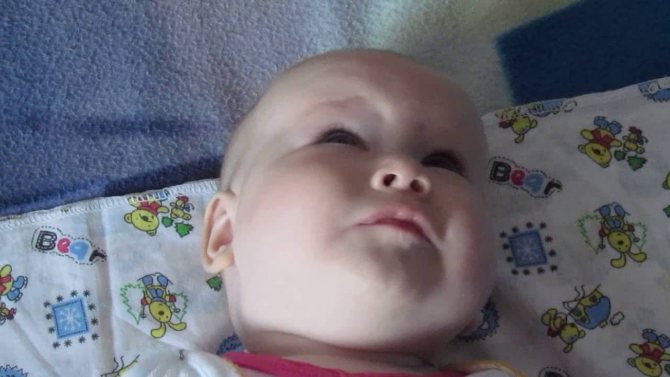
Eye movements are not coordinated
Anxiety should be caused by erratic movements of the pupils, their movement in different directions, not only upwards, when falling asleep. Unnatural twitching and uncoordinated eye movements should be reported to your doctor.
The head often throws back
A tilted head in a baby may be a sign of certain diseases.
Developmental delay
Developmental delays - insufficient weight gain, inconsistency with other age norms - should be a cause for concern.
Jaw trembling
Jaw twitching may be a sign of the development of neurological or endocrine disorders in an infant.
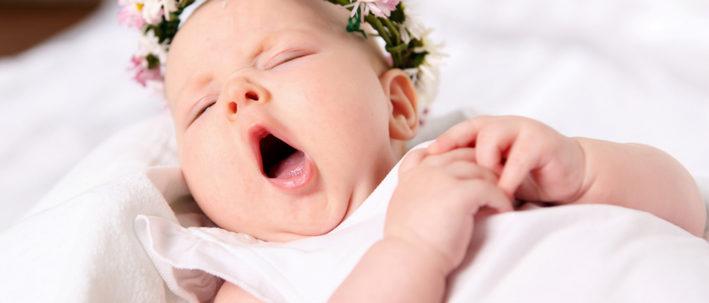
Strabismus
Strabismus becomes noticeable in the first months of life and requires timely treatment.
Very rapid and asymmetrical head growth
A disproportionately growing head may be a physiological feature and gradually straighten out or require serious treatment for hydrocephalus.
Vomiting, nausea
Frequent regurgitation and vomiting are a sign of an underdeveloped digestive system in a newborn. Sometimes they indicate the development of dangerous diseases.
Problems with nutrition and feeding
If the baby does not eat well, regularly does not meet age-appropriate feeding standards, or the sucking reflex is poorly developed, you should consult a pediatrician.
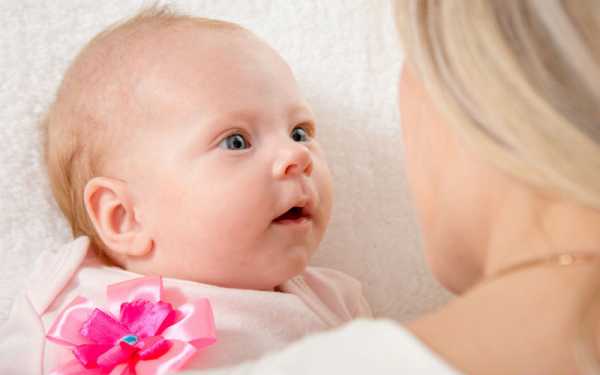
Motor coordination disorders
The baby must gradually learn to coordinate his movements - pull the arms, follow the object with his eyes, turn his head towards the sound. If coordination is impaired, nervous system disorders may be diagnosed.
Increased body temperature
A dangerous sign is an increase in temperature. This is a reason to urgently call a doctor without trying to knock it down yourself.
How does this happen
It is necessary to immediately explain what rolling eyes means. In this case, the eyes are slightly open, but only the white of the eye is visible through the palpebral fissure. The eyeball moves slightly upward. In this position, the iris and pupil are completely invisible. It must be said that such a picture is very frightening for the people around him, because in feature films this is exactly how the eyes of a witch are depicted when she is in a trance.
But if shamans have to learn to move their eyes, then in babies they roll for a reason beyond their control. The fact is that small children cannot fully control the movement of their eyes. Normally, such movements are controlled by several muscles, so it is very difficult for a newborn to control the operation of the entire system.
The ability to control the eyes is not an innate reflex. A child learns this skill a couple of months after birth.
How parents can help their babies
The main task of parents is to carefully monitor the condition of the newborn and pay attention to additional symptoms other than eye rolling. If the baby is cheerful and gaining weight well, there is no reason to worry. You should tell your doctor about your concerns during visits and medical examinations. An examination by an ophthalmologist and a neurologist is carried out at 1 month; specialists should tell about all the signs that seem alarming to the mother. If necessary, additional examination and treatment will be prescribed.
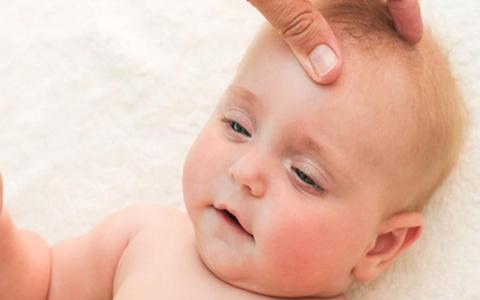
Important: medical examinations should not be ignored. During the examination, specialists will dispel worries or promptly diagnose a dangerous disease.
Therapeutic measures
If the baby is growing and the eye rolling continues, the doctor may prescribe therapeutic measures to strengthen the muscles. Diagnostic tests are usually performed when several warning signs are present or when the child is more than 3 months old. The eye muscles are strengthened without drugs using exercises and physical therapy.
Gymnastics for the eyes
The simplest exercises for the eye muscles are carried out for infants in the form of a game. The baby is taught to focus his gaze while following a toy. To do this, choose a bright rattle and slowly move it in front of your eyes, drawing attention to it. It is important that the baby is healthy, well-fed and in a good mood at this time. The distance is changed, teaching the child to find the object and not look away. It’s worth playing with your baby until he gets tired. This will be a complete workout for the eye muscles.
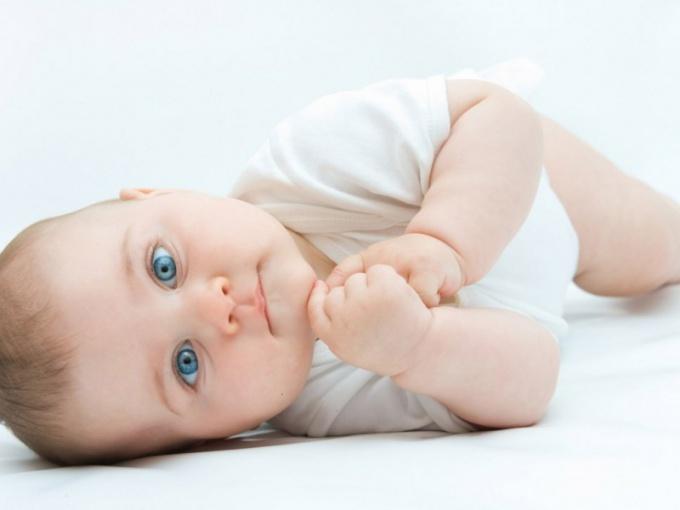
A mobile phone that is great for independent training attracts kids with a variety of bright objects and teaches them to independently choose an object to observe.
Massage and physiotherapy
Massage has a general strengthening effect and increases muscle tone in the baby. It is important to find a good specialist who knows how to work with infants. A special eye massage strengthens the eye muscles and improves coordinated joint movements of the eyeballs.
Self-massage will not give the desired result. Parents can invite a massage therapist to their home or visit a clinic. If there are indications, other physiotherapy procedures are prescribed - therapeutic baths with soothing phytocomplexes, physical therapy exercises for muscle development, reflexology.
When to go to the doctor
Dear parents, you should not delay your visit to the hospital to show your baby to doctors if:
- upward movement of the pupils is accompanied by anxiety, crying and (or) continues periodically throughout the day;
- the symptom persists after the baby is three months old;
- the pupils roll down, not up.
Sometimes the causes of deviation are hidden in muscular dystonia, which requires prevention and specific gymnastics. Special physical exercises and therapeutic procedures will help reduce the unpleasant effect when the baby falls asleep, as well as improve coordination and muscle tone of the visual organs. Only a specialist can tell you whether a baby is normal or pathological, who, if necessary, will prescribe a set of exercises to teach the baby to master the necessary muscles as much as possible. I will be happy to tell you how to help your baby at home yourself:
- Take a bright small toy and show it to your baby. Hold it directly in front of his face at a distance of about 20 cm until the baby focuses his gaze on the object.
- Get the little one to follow the toy with its eyes. To do this, smoothly move it from side to side, further and closer from the baby’s eyes.

Please note that at this time nothing should distract the newborn from activities.
In what cases can it be a symptom in infants?
Parents, together with doctors, must determine in time when eye rolling is not a physiological feature of young infants, but indicates the development of pathologies. An alarming sign is that the baby is already more than 3 months old, but the rolling of the eyes does not decrease; it occurs not only before falling asleep, but also while awake.
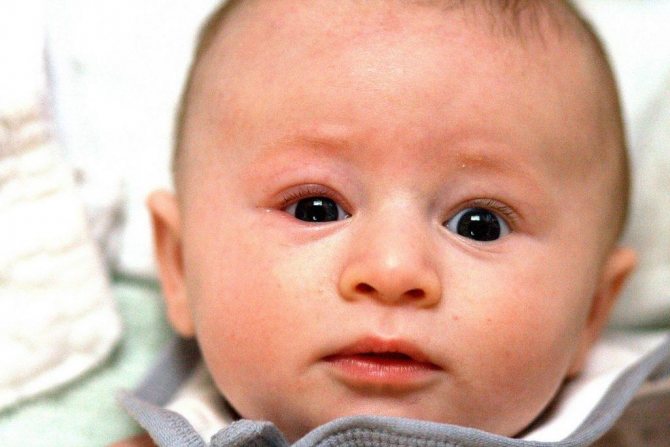
Intracranial pressure
Increased intracranial pressure in an infant is characterized by many signs, including rolling and protruding eyes. Hypertension can be suspected by a disproportionate increase in head size and severe anxiety in the infant, as he suffers from headaches.
ENT disease
Severe diseases of the nasopharynx (also otitis media) can negatively affect the eye muscles and provoke their weakening. As a result, the rolling of the pupils of an infant may last longer than physiological norms.
Graefe syndrome
Eye rolling may be a partial or isolated manifestation of Graefe syndrome, caused by excess cerebrospinal fluid in the brain. In this case, rolling up is called Graefe's symptom.
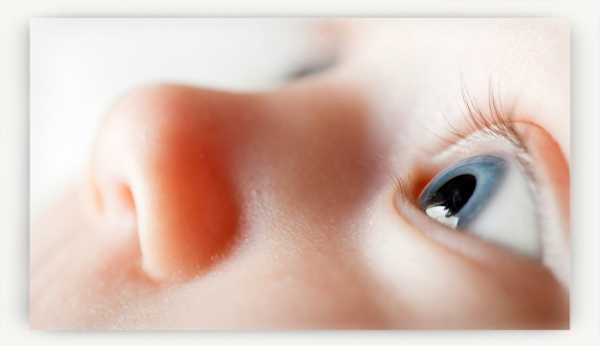
It is characterized by the movement of the eyeballs down to the lower eyelid, slight mobility of dilated pupils. In this case, the baby throws his head back. Usually the muscle condition returns to normal by 6 months.
Epileptic seizure
Eye rolling may be a warning sign of the onset of epilepsy. In this case, the child suffers from convulsive movements and has increased muscle tone. During sleep, short-term pauses in breathing may occur, and the baby turns his head sharply and frequently.
Muscular dystonia
Increased or decreased tone of the eye muscles, causing the pupils to roll back, may be a sign of muscular dystonia. This is one of the syndromes of central nervous system damage.
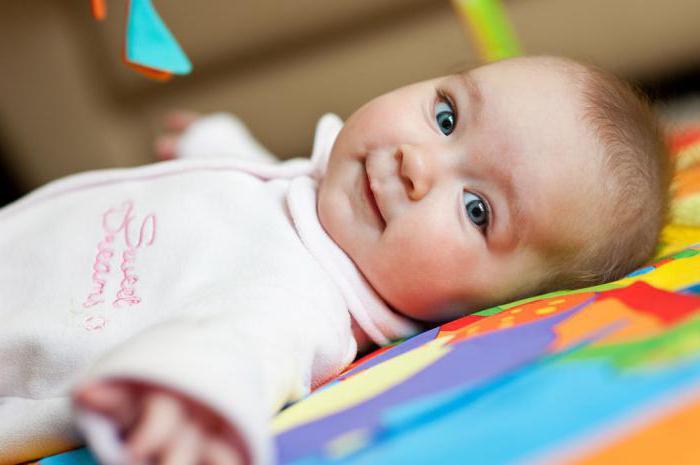
Causes of the phenomenon
Why does a child roll his eyes upward in his sleep or when awake?
If the newborn baby is calm, does not try to twitch, has no problems sleeping, and sucks the breast with appetite, there is no need to worry. In this case, we are talking about a normal physiological phenomenon. The fact is that the baby’s nervous system is still immature, so the baby does not know how to control his muscles and focus on objects. Therefore, eye rolling in a newborn is considered normal.

Baby with rolled eyes
If this happens after a month, attention should be paid to this fact, since at this age children already know how to control the muscles of their eyes.
Important! If this happens after a year, it may be caused by the child playing.
While falling asleep
If a newborn rolls his eyes when he falls asleep, this is completely natural. Even adults sleep with raised pupils. This is how the brain tunes in to sleep.
When he sleeps
In children under one month old, the muscles of the eyelids are not fully developed, so they can open spontaneously. Experienced parents already know that children can sleep with their eyes open. This shouldn't be scary.

Sleeping newborn
You should be concerned about the situation when at 3 months the baby continues to roll his eyes. Here you need to consult a neurologist.
Other possible options
9 times out of 10, rolling your eyes is not a cause for alarm. The baby may try to focus his gaze on an object that is not within his vision. Newborn babies do not yet know how to hold their heads up, so they can turn their eyes to look around.
In 1 percent of cases, the sign indicates a malfunction in the functioning of the body:
- Paroxysmal tonic gaze. This is a genetically determined disease that can manifest itself after infection with pathogenic microorganisms. The condition is not dangerous, but can cause delayed psychological development.
- Otitis.
- Eye diseases.
- Inflammation of the tonsils.
- Nervous tic. It usually occurs in older children (from 4 years old), but in an infant this condition should not be excluded.
- The onset of epilepsy or a single seizure. Here, apart from rolling back their eyes, children do not react to extraneous stimuli. Babies also shake their arms and legs. The head is thrown back.
- Increased intracranial pressure. In addition to the described symptom, the condition may be accompanied by vomiting. In this case, you should definitely call an ambulance, since increased intracranial pressure can lead to death.
- Graefe's symptom. Manifests itself in rolling the eyes downward while sleeping. As a rule, this goes away on its own by six months.
- Increased or decreased tone of facial muscles.
Diagnosis and treatment
If eye rolling in an infant is accompanied by additional symptoms, behavioral disorders, poor growth and development, the doctor will prescribe diagnostic tests. Conducted:
- MRI;
- neurosonography;
- CT.
The baby is examined by a neurologist and ophthalmologist. Based on the research results, treatment tactics for identified neurological or ophthalmological diseases are selected.
If no pathologies are identified in the baby, massage and physiotherapy are prescribed to strengthen the eye muscles. Additionally, they may recommend taking vitamins.
Diagnostics
It is worth noting! To find out whether eye rolling in a child is normal or pathological, it is necessary to examine the newborn.
The system of diagnostic measures includes:
- MRI and CT scan of the brain . This method allows you to determine the condition of the brain tissue, as well as the presence of accumulation of cerebrospinal fluid in the spaces and ventricles between the membranes of the brain.
- Neurosonography , which is performed through the child’s fontanel. Brain scanning is carried out using ultrasound waves, which assesses the degree of congenital diseases and reveals the nature of changes.
- Examination by an ophthalmologist.
Advice and recommendations from doctors
Some advice from doctors for young parents:
- In the vast majority of cases, eye rolling is simply a physiological feature of infant development. Don't worry ahead of time.
- Do not skip preventive examinations by specialists - they will notice problems in time.
- Pay more attention to your baby. Talk to him while moving around the room. Let him watch his mother with his eyes - this is an effective training of the eye muscles.
- Follow the recommendations - do gymnastics for the eye muscles, massage, if prescribed.
You should not come up with your own methods of treating infants or use traditional methods without the recommendations of a pediatrician. Parents should know that a baby may roll his eyes for completely harmless reasons - due to simple underdevelopment of muscles. But it is necessary to monitor the baby’s condition and notice problems in time to help the child strengthen his muscles and stimulate his immune system. Early detection of pathologies of the eyes and nervous system will help the baby quickly cope with the disease.
Causes of eye rolling in newborns, older children and adults
During the first month of life, children cannot control the work of their muscles and the eye muscles are no exception. Such babes do not know how to focus their eyes, so rolling up can be regarded as a variant of the norm. When the baby turns one month old, but this sign does not disappear, a diagnosis is necessary, as a serious disorder may occur.
Starting from the age of one month, children can already control their muscles, but if this does not happen, pathology occurs.
The reasons may be hidden in conditions such as:
- Epilepsy;
- Graefe syndrome;
- Uneven muscle tone;
- The phenomenon is observed with increased intracranial pressure.
For example, Graefe's syndrome is indicated by rolling the eyes downward when the baby has already fallen asleep. If the eyes go up, then this is just a feature of the body and there is no need to worry about anything - this indicates that the baby is almost asleep.
The listed diseases, accompanied by a similar symptom, are quite rare, but pose a great danger.
Therefore, for the sake of the child’s health, parents should immediately visit a pediatrician or pediatric neurologist. Deviations noticed in a timely manner allow treatment to begin at the earliest stages of pathology development, which increases the chances of a successful and rapid recovery.
If uneven tone of the eye muscles is detected, which is accompanied by rolling while falling asleep, physical therapy (PT) is prescribed. Diligently following the doctor’s prescriptions will allow you to quickly restore muscle tone, which, accordingly, will lead to a speedy recovery. The situation is much more complicated with other pathologies that require complex treatment.
Some pediatricians say that eye rolling that is not accompanied by changes in the baby's behavior is not dangerous. Perhaps it’s just more convenient for him, or when the child is already big enough, he plays like this. But if accompanying disorders appear, you must seek medical help.
What to do when you roll your eyes?
First you need to visit a pediatrician or pediatric neurologist. Many parents put off making a visit, but at home it is impossible to determine the cause of the disorder and make a diagnosis. In newborns, this condition does not pose a threat, but after a month, parents and doctors should take it more seriously.
A diagnostic test is required. You should not delay it if disturbances are detected in the functioning of the nervous system. Parents should remember that contacting a specialist should be urgent, that is, immediately after symptoms are detected.
Rolling the eyes to the side when falling asleep can be a physiological feature or a symptom indicating the presence of pathology. Special exercises for the eyes help well with disorders of the visual system, but under the age of one year it is almost impossible to perform it.
Eye rolling in children and adults as a sign of hydrocephalus
This pathology is manifested by the accumulation of an excessive amount of fluid in the brain, resulting in damage to the brain. Hydrocephalus is also called hydrocephalus. This pathology without timely treatment can lead to death.
Symptoms of the disease depend on the age of the patient and the degree of progression of the pathology. For example, in newborns, the roundness of the head exceeds the norm and then quickly increases, and on the parietal part of the head there is a convex fontanel. Sick children vomit, become irritable, and have trouble sleeping. Eye rolling with convulsions also occurs periodically in newborns. Very often, babies with hydrocephalus develop delayed.
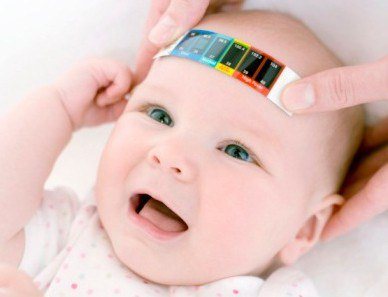
Older children and adults experience headaches accompanied by vomiting. As for the visual system, they experience attacks with double vision, inability to focus vision, and rolling of the eyes.
During movement, poor balance, fatigue, and poor coordination may be present. With hydrocephalus, urinary incontinence, memory loss, severe irritability and personality changes periodically occur.
In addition, the symptoms are influenced by the cause that provoked the accumulation of fluid. For example, in old age the normotensive form is most often diagnosed, which manifests itself primarily in problems with walking, urinary incontinence, and dementia.
The cause of hydrocephalus may be a primary disease (meningitis, intoxication, meningoencephalitis) or an injury that disrupts the outflow of fluid from the brain. In newborns, it is triggered by an infectious disease that the mother suffered during pregnancy. It is worth noting that congenital hydrocephalus can make itself felt not in the first days of life, but even after several months.
Treatment methods for hydrocephalus in children and adults
In the early stages of the disease, conservative treatment (medication) is possible, but with rapid progression, surgical intervention is indicated. The most common method previously was ventriculoperitoneal shunting.
The patient was implanted with special shunts that ensured the outflow of fluid from the brain into the abdominal cavity. A significant disadvantage of this method is the imperfection of the shunts, so they need to be changed every few years.
One of the methods of surgical intervention is the ETV operation. During the procedure, a hole is made in the ventricle of the brain through which excess fluid drains. This method is used for blockage between the ventricles of the brain. It is also used for the congenital form of the disease, if shunting does not help or infection occurs. Now this method is used only when the child is over 6 months old.
One of the most effective methods is neuroendoscopic. It is the most gentle of the above. During the operation, neuroendoscopes with a mini-camera are used, which allows you to visualize the entire process and restore normal fluid outflow.
Monitor your symptoms and do not delay your visit to the doctor, as the consequences of delay can be disastrous!
Elena Zhabinskaya
Hi guys! Lena Zhabinskaya is with you! Have you ever seen a newborn roll his eyes in his sleep? Why do you think this happens? It turns out that physiology is to blame. However, this does not mean that you should not worry about the baby’s health. Every little detail is important in this matter, namely: how it happens, when and, most importantly, for how long. Let's look for answers to these and other questions together today.
In order to eliminate any misunderstandings, it is necessary to immediately determine what the term “rolling your eyes” means in relation to newborns. According to doctors, everything looks like this: the baby is sleeping, but at the same time his eyelids are half-closed. In the resulting cross-section of the eyes, only the whites are visible. The pupil rolls up, hiding as much as possible under the eyelid.
The picture is strange and sometimes really frightening, especially when the baby is the first child. The main thing is not to panic, not to make noise and not to wake up the baby, because in such a situation he will simply get scared. It is interesting that in the presence of extraneous sounds, the child sometimes opens his eyes completely, and then falls asleep even more deeply.



